July 2-30, 2009
This time of the year, the dry season, requires maintenance for the revegetation sites that were planted this past rainy season as well as producing new trees in the greenhouse for next year’s sites.
We’ve been watering sites on a regular basis. Recently I met with our friend Chino and he now helps out with two places that don’t have water access nearby, El Toro and Beletine. He has a very nice truck and two 1,200 liter tanks for tranporting water. The typical routine is to fill up one of the tanks, drive into the site, unload the empty tank and transfer the water out of the truck into it. That way Chino can drive around for the morning taking care of other business, while we carry all of that water in jugs uphill to the trees.
Among the many benefits of this routine is that we end up watering each tree with between one and two gallons, which is three to six times as much water as usual. The trees are responding very well.
Watered sites include: La Universidad Catolica, Bosque Encantado, Beletine, El Toro, All three sites in El Astillero, Ruperti, San Roque, and Jorge Lomas.
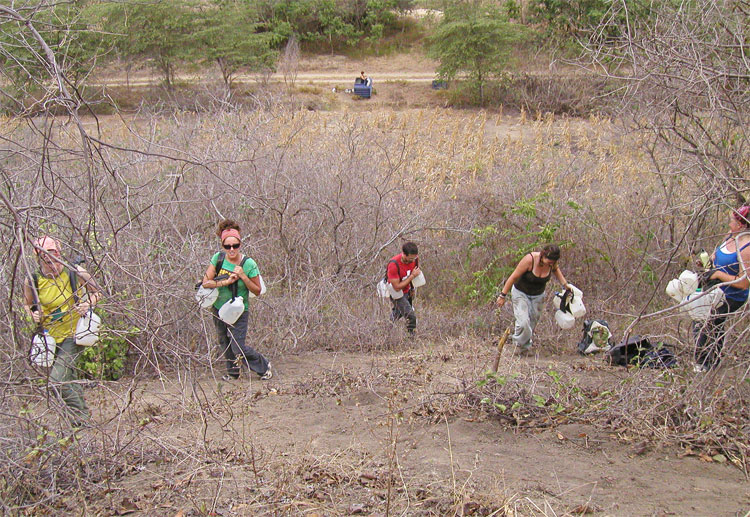
Liz, Paola, Aaron, Keara, and Jessi carry water up the steep hill at the El Toro site. Meret and the water tank are visible in the background.

Volunteers take a rest at the Ruperti revegetation site.
There has been a lot of progress in the greenhouse. Currently four new seed beds are planted with Guasmo and Algarrobo seeds. Guasmo seeds are spiky and black. Each shell contains about a dozen small seeds inside. The seeds germinate quickly and only need to be broken out of the shell. Algarrobo seeds on the other hand come in long pods, like string beans. The pulp of the pods is rich in carbohydrates and they are often used as animal feed. If they are ground up, the animals also receive protein from the seeds. The seeds inside are tough and have a thick casing. In order to speed germination, the pods are broken up and the seeds are soaked for two to three days before being sown.
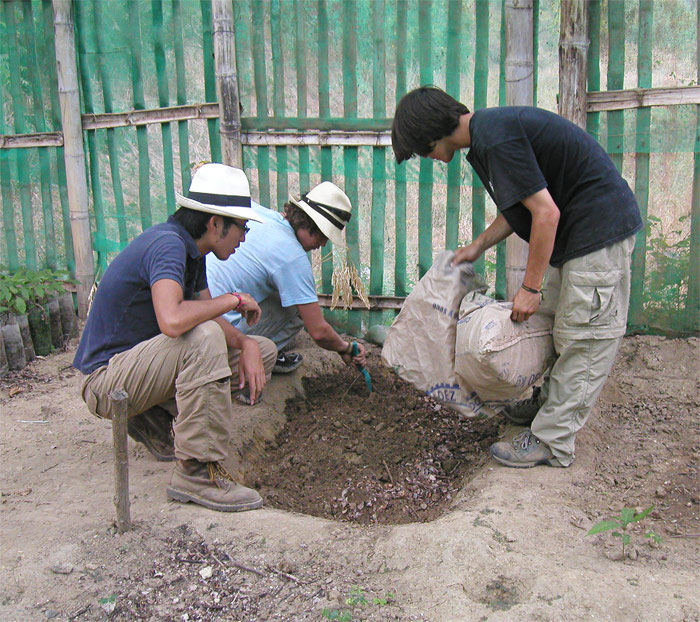
Yuki, Mateo and Zach put the finishing touches on a seedbed planted with Guasmo

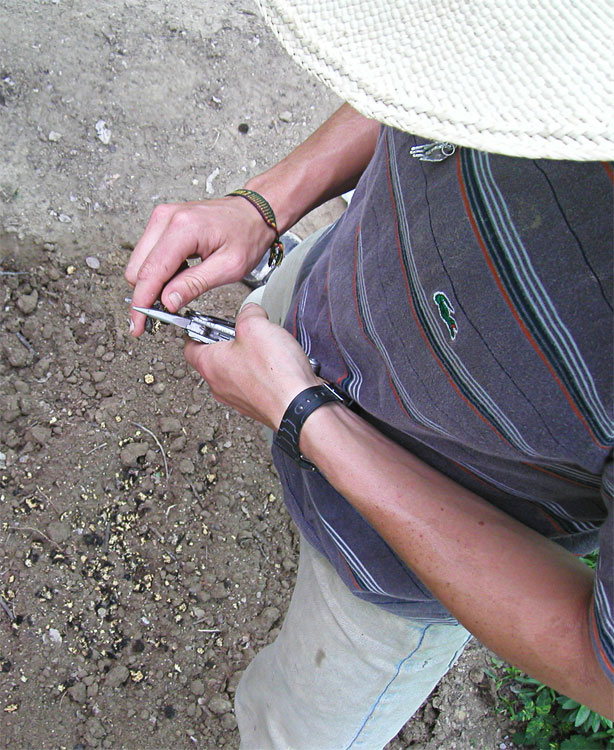
Mateo breaks up Guasmo seeds over another bed.

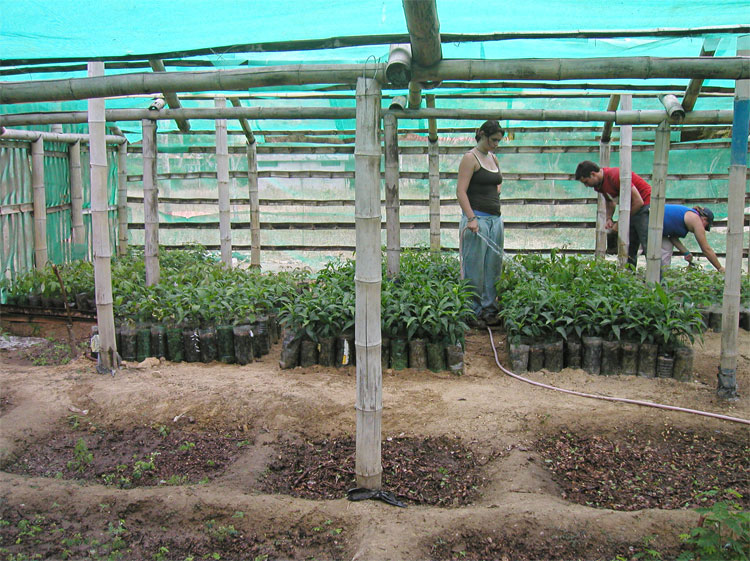
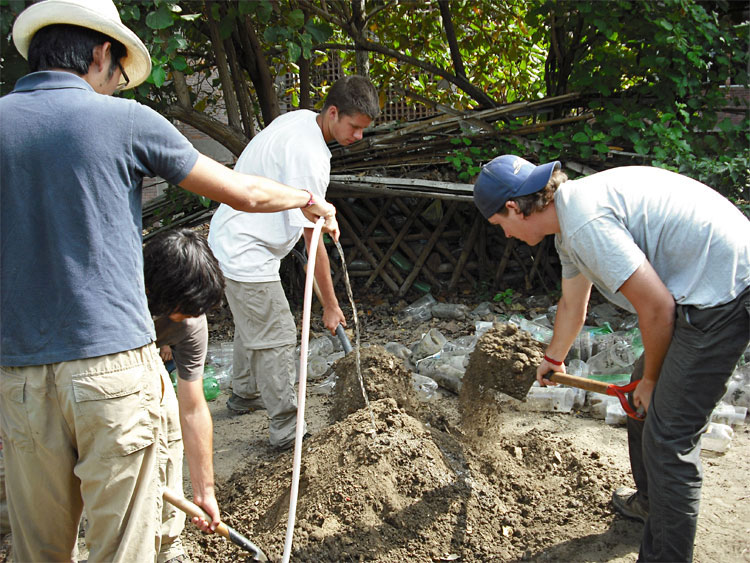

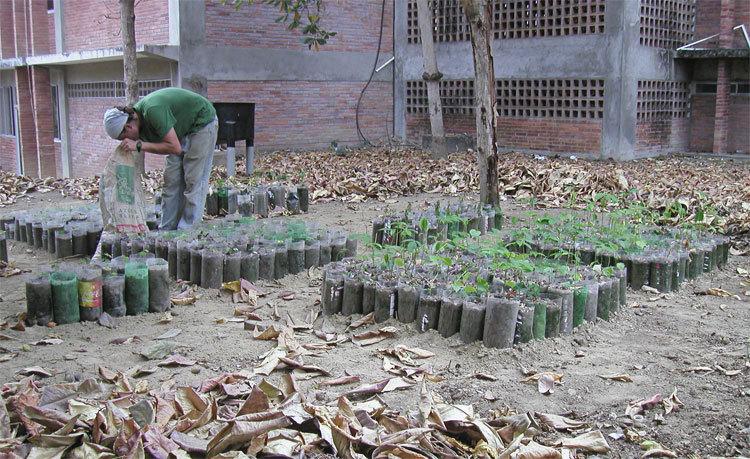
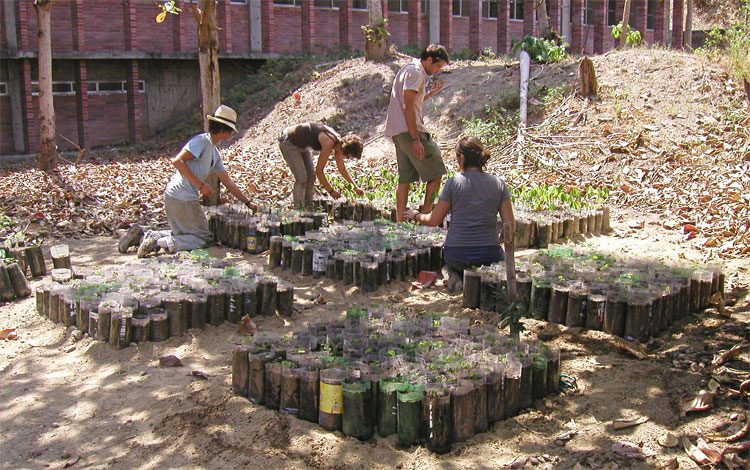
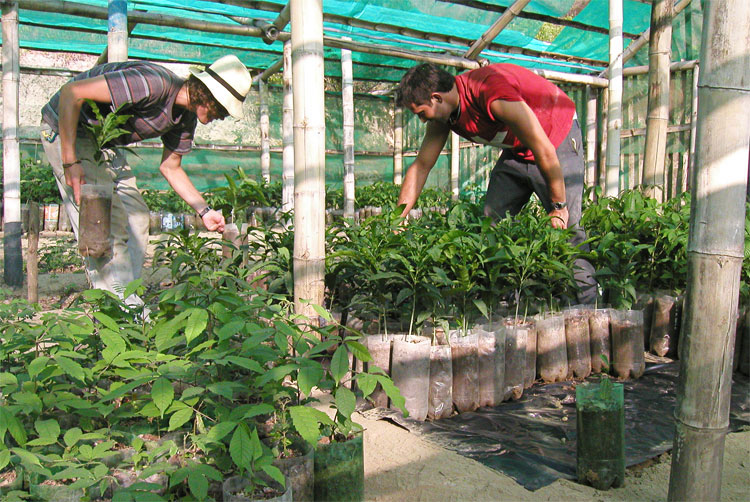

As trees germinate and grow to a few inches in height, we transfer them out of the beds into three-liter bottles. Bottles were collected, cut, and rinsed. Soil was mixed (1/3 humus, 1/3 compost, 1/3 river sand).
We transplanted Jaboncillo, Ceibo, Guachepeli, Pechiche, and Coca saplings.
The greenhouse started to overflow so we cleared a space nearby to store trees.
The final bit of business at the greenhouse was to rearrange the trees a bit. Many have grown to the point that their roots are beginning to poke out of the drainage holes in the bottle of the three-liter bottles. This will complicate matters in the future because the roots grow into the ground below and then when it is time to transplant them into the field, their roots are very large and easily damaged during transport. In previous years we attempted to mitigate this problem by stacking the trees on top of a layer of bricks, but many still managed to drop roots between the cracks in the bricks, creating an even more delicate situation.
This year I purchased strips of plastic to place under the trees to attempt to discourage the roots from growing out of the bottles. Volunteers helped transfer them onto the plastic. I am hopeful that the new arrangement will make things easier for moving the trees out of the greenhouse.
In the past month we also took a field trip with all the volunteers to the permaculture farm, Rio Muchacho, and began construction of a tent platform during two visits to the Planet Drum Bioregional Sustainability land, described in a separate report.
Pásalo bien,
Clay

Reader Interactions